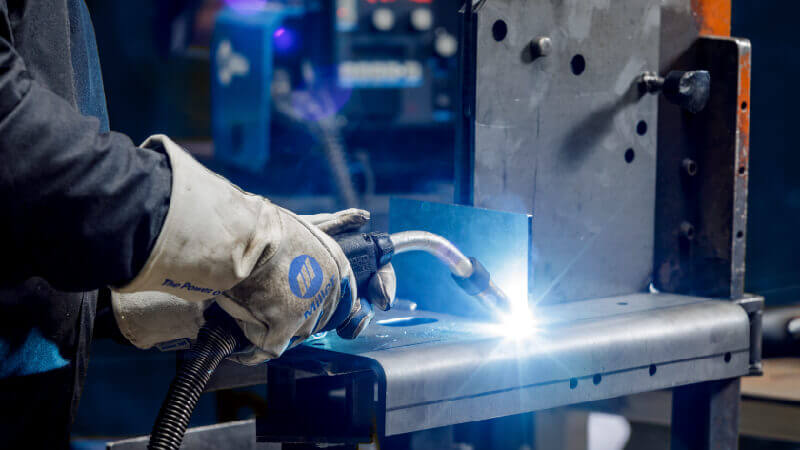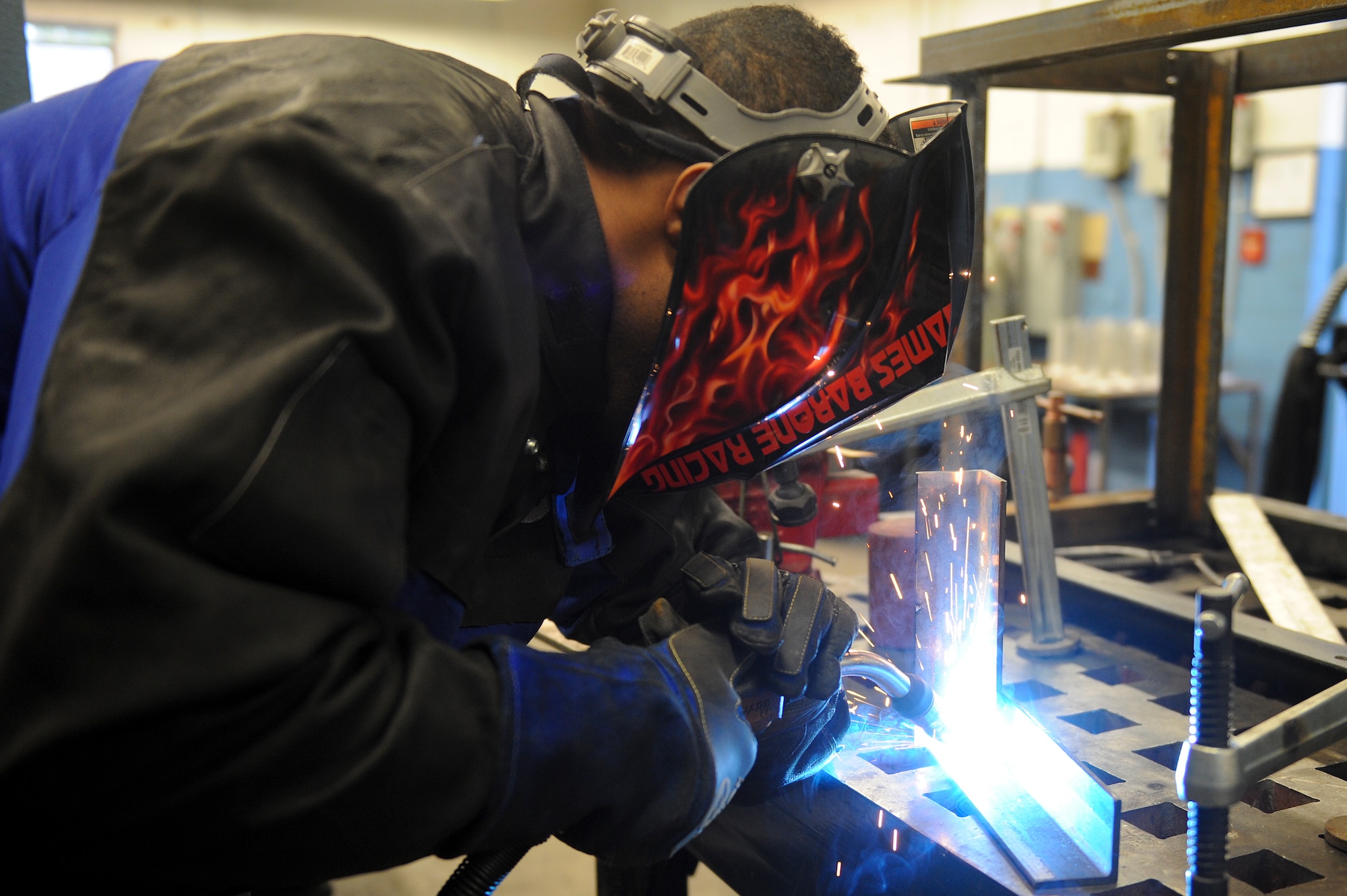Steps to success for poor fusion from Montana Mobile Welding and Repair
Common Welding Repair Work Issues and Exactly How to Address Them Successfully
Welding fixings frequently run into a variety of concerns that can threaten the integrity of the end product. Usual problems include inadequate penetration, porosity, and misalignment, to name a few. Each problem provides one-of-a-kind challenges that require specific methods for resolution. Comprehending these issues is important for welders aiming to enhance their skills and results. This conversation will explore these usual welding repair work problems and effective approaches to resolve them.
Inadequate Infiltration
Poor infiltration occurs when the weld steel stops working to totally fuse with the base material, causing weak joints and possible structural failings. This problem often comes from not enough warm input, wrong electrode angle, or incorrect welding rate. Welders may experience poor penetration because of a mistake of the necessary criteria for a particular product density or type. In addition, contamination on the base material's surface can prevent effective bonding, aggravating the problem. To deal with poor infiltration, welders ought to guarantee suitable setups on their devices and keep a tidy work surface. Routine examination of welds is recommended to determine any type of shortages early, permitting for timely modifications and the prevention of endangered architectural honesty in bonded assemblies.
Porosity
Porosity is an usual flaw in welded joints that manifests as small gas bubbles trapped within the weld metal. This problem can jeopardize the honesty of the weld, causing minimized stamina and possible failing under anxiety. Montana Mobile Welding and Repair Welding. Porosity typically arises from contamination, moisture, or incorrect welding strategies, which enable gases to leave into the molten weld swimming pool. To resolve porosity, welders must assure appropriate surface area prep work, maintain a clean workplace, and use ideal welding criteria. Additionally, selecting the right filler product and securing gas can reduce gas entrapment. Regular inspection and screening of welds can help identify porosity early, ensuring timely restorative actions are taken, consequently maintaining the top quality and dependability of the bonded structure
Misalignment
Misalignment in welding can develop from numerous variables, including incorrect configuration and thermal growth. Recognizing the source is essential for reliable resolution. Several improvement techniques are readily available to straighten elements and guarantee structural integrity.
Root causes of Misalignment
Welding imbalance often originates from a variety of underlying issues that can compromise structural honesty. One primary cause is inappropriate fit-up of parts prior to welding, which can result in gaps and uneven surfaces. Variants in thermal expansion throughout the welding process can also lead to distortion, specifically if the materials being joined have various coefficients of expansion. Furthermore, poor securing and fixturing might stop working to hold elements firmly in position, bring about activity during welding. Improperly maintained equipment, including welding makers and devices, might introduce variances in the weld grain, further adding to imbalance. Operator mistake, stemming from not enough training or experience, can also play a substantial role in producing misaligned welds.

Modification Strategies Offered
Addressing imbalance properly calls for a mix of restorative strategies tailored to the specific concerns available. One typical method is the use of fixtures or jigs to hold components in the correct setting during welding, making sure regular placement. Additionally, preheating the products can help in reducing distortion and enhance fit-up. For significant misalignment, mechanical realignment strategies, such as using hydraulic jacks or clamps, can be employed to correct the setting before welding. Post-weld heat therapy might likewise be essential to relieve anxieties brought on by imbalance. Careful inspection and adjustment during the configuration phase can prevent imbalance issues from ending up being substantial issues, promoting a smoother welding procedure and enhancing overall architectural honesty.
Distortion
Distortion is a typical difficulty in welding that can occur from different elements, including uneven heating & cooling. Recognizing the causes of distortion is essential for applying efficient avoidance techniques. Addressing this concern not only enhances architectural honesty however likewise enhances the general quality of the weld.
Sources of Distortion
When based on the extreme warm of welding, products typically undertake modifications that can result in distortion. This phenomenon mostly emerges from thermal growth and contraction throughout the welding process. As the weld location heats up, the product broadens; upon cooling, it gets, which can develop internal stress and anxieties. In addition, unequal home heating across a workpiece can exacerbate these stresses, causing warping or flexing. The kind of product also plays a considerable duty; steels with varying thermal conductivity and coefficients of growth might respond in a different way, leading to unpredictable distortions. Poor joint style and poor fixturing can contribute to imbalance during welding, raising the possibility of distortion. Recognizing these reasons is necessary for efficient welding repair service and prevention techniques.
Avoidance Techniques
Effective prevention techniques for distortion throughout welding concentrate on managing warm input and guaranteeing appropriate joint layout. Keeping a constant warmth input assists to decrease thermal expansion and contraction, which can result in distortion. Using methods such as preheating the work surface can additionally decrease the temperature gradient, promoting uniform home heating. Furthermore, selecting ideal joint styles, such as T-joints or lap joints, can improve stability and decrease stress and anxiety concentrations. Applying proper fixturing to safeguard the workpieces in area even more help in maintaining alignment throughout the welding process. Ultimately, staggered welding series can disperse warmth more evenly, protecting against local distortion. By applying these strategies, welders can significantly lower the chance of distortion and boost the general high quality of their welds.
Fracturing
Cracking is a typical problem experienced in welding repair services, often resulting from numerous factors such as incorrect air conditioning prices, material choice, or poor joint preparation. The incident of fractures can significantly endanger the honesty of the weld, resulting in possible failures throughout procedure. To address this issue, welders must initially analyze the origin triggers, making sure that materials are compatible and suitably selected for the certain application. Additionally, view managing the cooling rate throughout the welding procedure is necessary; fast cooling can generate stress and result in fracturing. Correct joint layout and prep work also add to lessening the risk. Carrying out these strategies can improve weld quality and sturdiness, eventually reducing the probability of fracturing in ended up weldments.

Incomplete Blend
A significant concern in welding repairs is insufficient combination, which takes place when the weld metal does not adequately bond with the base product or previous weld passes - Belgrade. This problem can lead to weaknesses in the joint, potentially endangering the stability of the welded framework. Factors adding to incomplete fusion include insufficient warmth input, inappropriate welding strategy, and contamination of the surface areas being signed up with. To resolve this issue effectively, welders need to guarantee proper pre-weld cleaning and surface area prep work, as well as adjust their welding criteria to attain adequate infiltration and fusion. Routine assessment throughout the welding process can also assist recognize incomplete combination early, enabling prompt rehabilitative measures to enhance the overall high quality of the weld
Overheating
While welding repairs can improve structural integrity, overheating presents a considerable obstacle that can bring about material destruction. Excessive warmth during welding can modify the mechanical buildings of metals, causing lowered stamina, increased brittleness, and bending. This sensation is particularly vital in high-stress applications where structural integrity is paramount. Identifying getting too hot can entail visual assessments for discoloration or distortion, as well as checking temperature level during the welding procedure. To minimize the dangers associated with overheating, welders must use appropriate strategies, such as managing warmth input, changing traveling rate, and using suitable filler materials. Additionally, executing pre- and post-weld heat therapies can aid bring back product buildings and boost the overall top quality of the repair, guaranteeing long-lasting performance and safety and security.
Often Asked Inquiries
What Are the Typical Indicators of a Welding Flaw?

How Can I Evaluate My Welds for High quality?
To check welds for high quality, one can use visual inspections, ultrasonic screening, and radiographic approaches. Each method ensures architectural integrity, determines problems, and verifies adherence to defined criteria, ultimately boosting the dependability of the bonded joints.
What Safety and security Safety Measures Should I Take While Welding?
When welding, one click now should prioritize safety by using appropriate personal protective devices, ensuring correct ventilation, safeguarding combustible materials away, preserving a clean office, and being Get More Info conscious of surroundings to stop injuries and crashes.
Can I Repair a Weld Without Redoing the Entire Joint?
Fixing a weld without redoing the entire joint is possible, relying on the damage (Montana Mobile Welding and Repair). Techniques such as grinding, including filler product, or utilizing a welding process can efficiently address details problems while preserving the bordering framework
What Tools Are Important for Effective Welding Repairs?
Necessary tools for efficient welding fixings consist of a welding equipment, cable brush, grinder, safety gear, clamps, and filler materials. Each tool plays an important role in making certain quality and security during the repair service process. Porosity generally occurs from contamination, moisture, or improper welding strategies, which enable gases to escape right into the molten weld pool. Improperly conserved devices, consisting of welding devices and tools, might present inconsistencies in the weld grain, additional contributing to misalignment. When subjected to the extreme warm of welding, products usually go through modifications that can lead to distortion. Splitting is an usual issue come across in welding repairs, typically resulting from numerous variables such as incorrect air conditioning prices, product choice, or poor joint preparation. A considerable problem in welding fixings is incomplete fusion, which takes place when the weld steel does not sufficiently bond with the base product or previous weld passes.